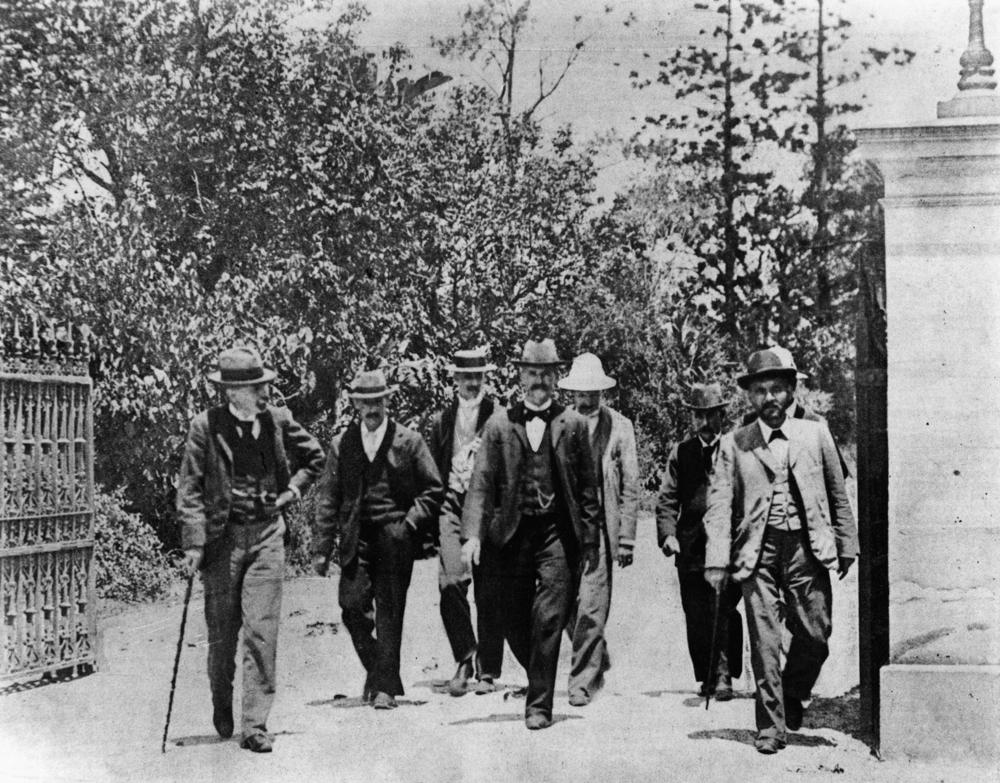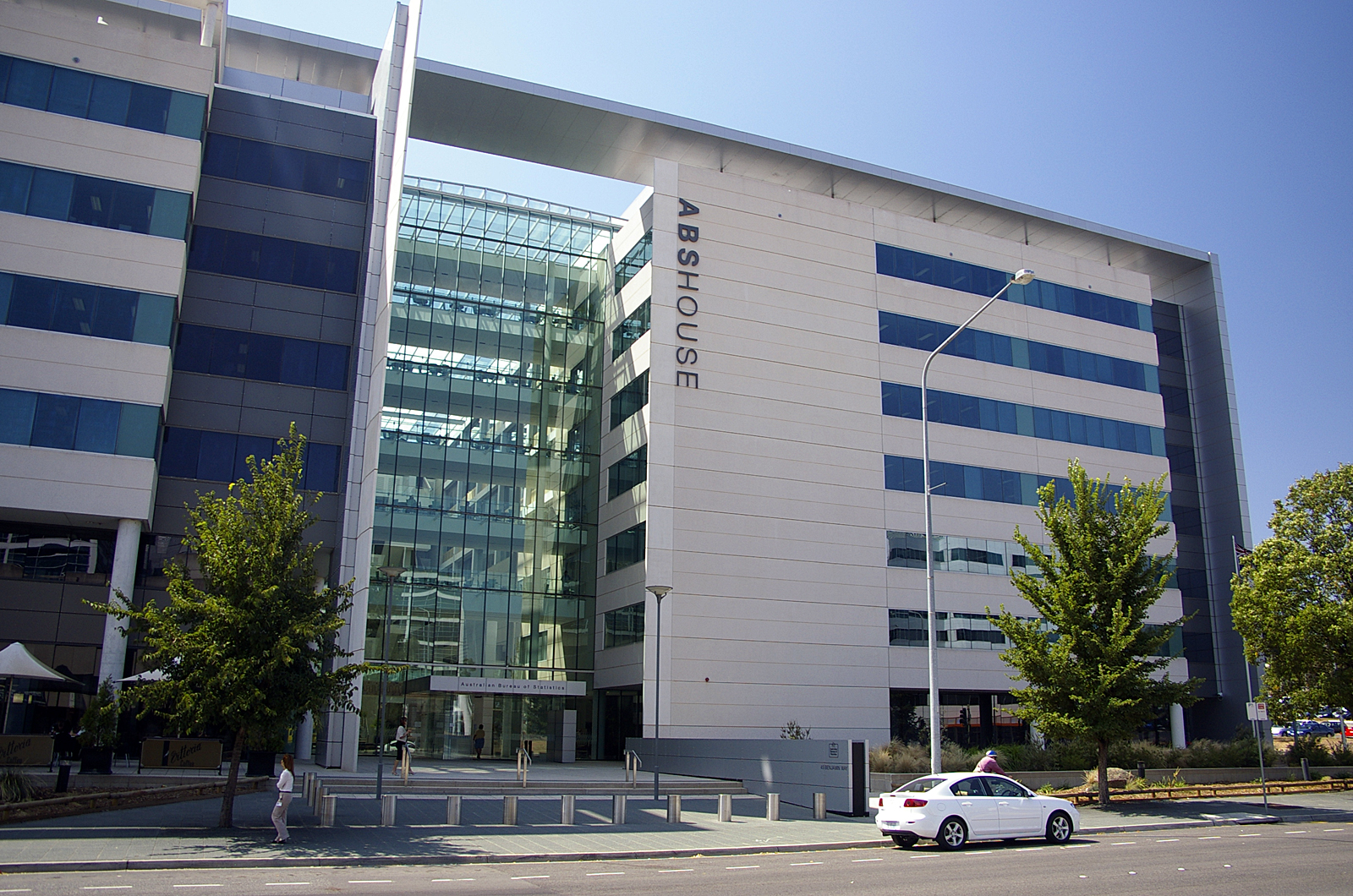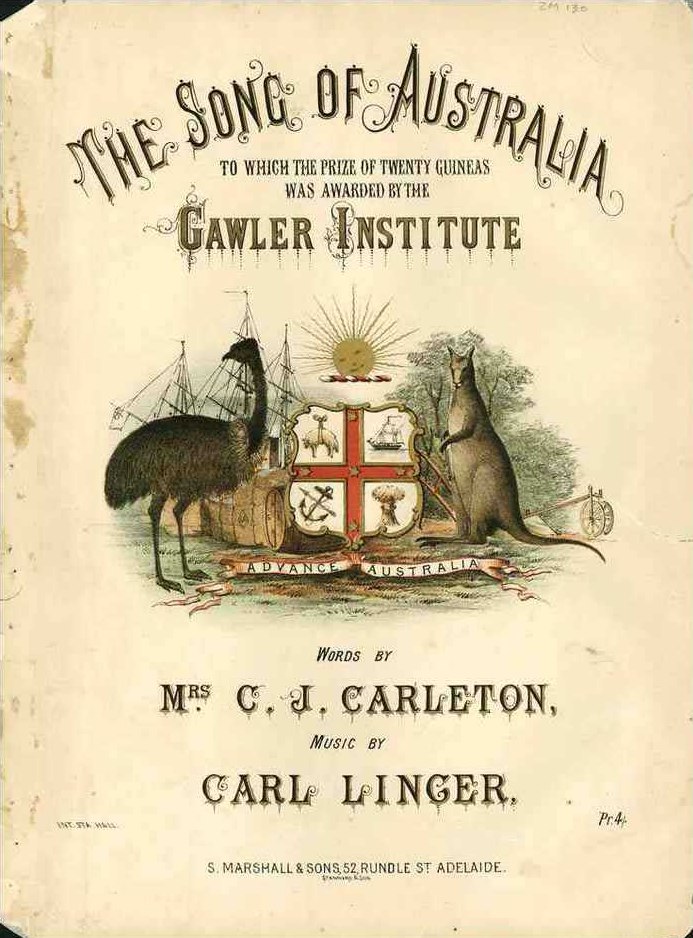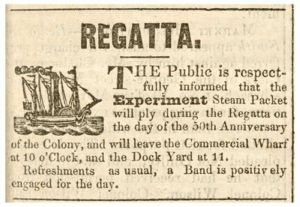|
National Anthem Of Australia
"Advance Australia Fair" is the national anthem of Australia. Written by Scottish-born composer Peter Dodds McCormick, the song was first performed in 1878, sung in Australia as a patriotic song. It first replaced "God Save the Queen" as the official national anthem in 1974, following a nationwide opinion survey. "God Save the Queen" was reinstated in January 1976, but a plebiscite to choose the national song in 1977 preferred "Advance Australia Fair", which was restored in 1984. "God Save the King/Queen" became known as the royal anthem, which is used at public engagements attended by the King or members of the Royal Family. The 1984 version of "Advance Australia Fair" has lyrics modified from McCormick's original and verses trimmed down from four to two. In January 2021, the lyrics were changed again. History Origin "Advance Australia Fair" was published in early December 1878 by Scottish-born composer Peter Dodds McCormick (1833–1916) under the pen-name "Amicus" (which ... [...More Info...] [...Related Items...] OR: [Wikipedia] [Google] [Baidu] |
Australia
Australia, officially the Commonwealth of Australia, is a Sovereign state, sovereign country comprising the mainland of the Australia (continent), Australian continent, the island of Tasmania, and numerous List of islands of Australia, smaller islands. With an area of , Australia is the largest country by area in Oceania and the world's List of countries and dependencies by area, sixth-largest country. Australia is the oldest, flattest, and driest inhabited continent, with the least fertile soils. It is a Megadiverse countries, megadiverse country, and its size gives it a wide variety of landscapes and climates, with Deserts of Australia, deserts in the centre, tropical Forests of Australia, rainforests in the north-east, and List of mountains in Australia, mountain ranges in the south-east. The ancestors of Aboriginal Australians began arriving from south east Asia approximately Early human migrations#Nearby Oceania, 65,000 years ago, during the Last Glacial Period, last i ... [...More Info...] [...Related Items...] OR: [Wikipedia] [Google] [Baidu] |
The Star-Spangled Banner
"The Star-Spangled Banner" is the national anthem of the United States. The lyrics come from the "Defence of Fort M'Henry", a poem written on September 14, 1814, by 35-year-old lawyer and amateur poet Francis Scott Key after witnessing the bombardment of Fort McHenry by British ships of the Royal Navy in Outer Baltimore Harbor in the Patapsco River during the Battle of Baltimore in the War of 1812. Key was inspired by the large U.S. flag, with 15 stars and 15 stripes, known as the Star-Spangled Banner, flying triumphantly above the fort during the U.S. victory. The poem was set to the tune of a popular British song written by John Stafford Smith for the Anacreontic Society, a men's social club in London. "To Anacreon in Heaven" (or "The Anacreontic Song"), with various lyrics, was already popular in the United States. This setting, renamed "The Star-Spangled Banner", soon became a well-known U.S. patriotic song. With a range of 19 semitones, it is known for being very diffi ... [...More Info...] [...Related Items...] OR: [Wikipedia] [Google] [Baidu] |
Australian Labor Party
The Australian Labor Party (ALP), also simply known as Labor, is the major centre-left political party in Australia, one of two major parties in Australian politics, along with the centre-right Liberal Party of Australia. The party forms the federal government since being elected in the 2022 election. The ALP is a federal party, with political branches in each state and territory. They are currently in government in Victoria, Queensland, Western Australia, South Australia, the Australian Capital Territory, and the Northern Territory. They are currently in opposition in New South Wales and Tasmania. It is the oldest political party in Australia, being established on 8 May 1901 at Parliament House, Melbourne, the meeting place of the first federal Parliament. The ALP was not founded as a federal party until after the first sitting of the Australian parliament in 1901. It is regarded as descended from labour parties founded in the various Australian colonies by the emerging la ... [...More Info...] [...Related Items...] OR: [Wikipedia] [Google] [Baidu] |
David Combe
Harvey David Mathew Combe (26 April 1943 – 21 September 2019) was National Secretary of the Australian Labor Party (ALP), a political consultant and lobbyist, an Australian Trade Commissioner, a Senior Vice-President International of Southcorp Wines, and a consultant to the Australian wine industry. He achieved a degree of unwanted prominence through the Combe-Ivanov affair of 1983. Early life Harvey David Mathew Combe was born in 1943 in Adelaide, South Australia, and was educated at Prince Alfred College and the University of Adelaide where he earned a BA. He became interested in politics at university and joined the ALP, partly through his friendship with Don Dunstan. (He became Patron of the Don Dunstan Foundation in 2004.) Career Combe was National Secretary of the Australian Labor Party (1973–1981), a political consultant and lobbyist (1981–1985), and an Australian senior trade commissioner (1985–1991), and held senior executive and board positions within the Au ... [...More Info...] [...Related Items...] OR: [Wikipedia] [Google] [Baidu] |
1975 Australian Constitutional Crisis
The 1975 Australian constitutional crisis, also known simply as the Dismissal, culminated on 11 November 1975 with the dismissal from office of the prime minister, Gough Whitlam of the Australian Labor Party (ALP), by Governor-General Sir John Kerr, who then commissioned the leader of the Opposition, Malcolm Fraser of the Liberal Party, as prime minister. It has been described as the greatest political and constitutional crisis in Australian history. The Labor Party under Gough Whitlam came to power in the election of 1972, ending 23 years of consecutive Liberal-Country Coalition government. Labor won a majority in the House of Representatives of 67 seats to the Coalition's 58 seats, but faced a hostile Senate. In May 1974, after the Senate voted to reject six of Labor's non-supply bills, Whitlam advised then-Governor General Sir Paul Hasluck to call a double dissolution election. The election saw Labor re-elected with its House of Representatives majority reduced from 9 ... [...More Info...] [...Related Items...] OR: [Wikipedia] [Google] [Baidu] |
1975 Australian Federal Election
The 1975 Australian federal election was held in Australia on 13 December 1975. All 127 seats in the House of Representatives and all 64 seats in the Senate were up for election, due to a double dissolution. Malcolm Fraser had been commissioned as caretaker prime minister following the dismissal of Gough Whitlam's three-year-old Labor government by Governor-General Sir John Kerr, on 11 November 1975. The same day, Fraser advised an immediate double dissolution, in accordance with Kerr's stipulated conditions (see 1975 Australian constitutional crisis). The Coalition of Fraser's Liberal Party of Australia and Doug Anthony's National Country Party secured government in its own right, winning the largest majority government to date in Australian history. The Liberals actually won a majority in their own right, with 68 seats–the first time that the main non-Labor party had done so since adopting the Liberal banner in 1944. Although Fraser had no need for the support of the Natio ... [...More Info...] [...Related Items...] OR: [Wikipedia] [Google] [Baidu] |
Australian Bureau Of Statistics
The Australian Bureau of Statistics (ABS) is the independent statutory agency of the Australian Government responsible for statistical collection and analysis and for giving evidence-based advice to federal, state and territory governments. The ABS collects and analyses statistics on economic, population, environmental and social issues, publishing many on their website. The ABS also operates the national Census of Population and Housing that occurs every five years. History In 1901, statistics were collected by each state for their individual use. While attempts were made to coordinate collections through an annual Conference of Statisticians, it was quickly realized that a National Statistical Office would be required to develop nationally comparable statistics. The Commonwealth Bureau of Census and Statistics (CBCS) was established under the Census and Statistics Act in 1905. Sir George Knibbs was appointed as the first Commonwealth Statistician. Initially, the bureau w ... [...More Info...] [...Related Items...] OR: [Wikipedia] [Google] [Baidu] |
The Song Of Australia
"The Song of Australia" was written by English-born poet Caroline Carleton in 1859 for a competition sponsored by the Gawler Institute. The music for the song was composed by the German-born Carl Linger (1810-1862), a prominent member of the Australian Forty-Eighters. It is also notable for being one of the entrants in the referendum to choose a new Australian National Anthem, where it was preferred by South Australia, but lost in the other states to "Advance Australia Fair". Contest On 1 October 1859, the ''South Australian Register'' announced: Announcing the winner and the second stage of the competition: And the announcement of the winner: Lyrics This is the poem as published in The South Australian Register on 21 October 1859: Criticism Publication of Caroline Carleton's poem caused an immediate controversy; that it was nice poetry, but "too tame"; one regretted that nothing more inspiring than the colour of the sky and the prettiness of the scenery could b ... [...More Info...] [...Related Items...] OR: [Wikipedia] [Google] [Baidu] |
Waltzing Matilda
"Waltzing Matilda" is a song developed in the Australian style of poetry and folk music called a bush ballad. It has been described as the country's "unofficial national anthem". The title was Australian slang for travelling on foot (waltzing) with one's belongings in a "matilda" ( swag) slung over one's back.''Oxford English Dictionary'', draft revision March 2001. "Matilda, n." The song narrates the story of an itinerant worker, or "swagman", making a drink of billy tea at a bush camp and capturing a stray jumbuck (sheep) to eat. When the jumbuck's owner, a squatter ( grazier), and three troopers (mounted policemen) pursue the swagman for theft, he declares "You'll never catch me alive!" and commits suicide by drowning himself in a nearby billabong (watering hole), after which his ghost haunts the site. The original lyrics were written in 1895 by Australian poet Banjo Paterson, and lyrics, altered by Marie Cowan, were first published as sheet music in 1903. Extensive folklo ... [...More Info...] [...Related Items...] OR: [Wikipedia] [Google] [Baidu] |
Australian Dollar
The Australian dollar (sign: $; code: AUD) is the currency of Australia, including its external territories: Christmas Island, Cocos (Keeling) Islands, and Norfolk Island. It is officially used as currency by three independent Pacific Island states: Kiribati, Nauru, and Tuvalu. It is legal tender in Australia.''Reserve Bank Act 1959'', s.36(1) an ''Currency Act 1965'', s.16 Within Australia, it is almost always abbreviated with the ($), with A$ or AU$ sometimes used to distinguish it from other |
Australia Council For The Arts
The Australia Council for the Arts, commonly known as the Australia Council, is the country's official arts council, serving as an arts funding and advisory body for the Government of Australia. The council was announced in 1967 as the Australian Council for the Arts, with the first members appointed the following year. It was made a statutory corporation by the passage of the ''Australia Council Act 1975''. The organisation has included several boards within its structure over the years, including more than one incarnation of a Visual Arts Board (VAB), in the 1970s–80s and in the early 2000s. History Prime Minister Harold Holt announced the establishment of a national arts council in November 1967, modelled on similar bodies in Canada, the United Kingdom and the United States. It was one of his last major policy announcements prior to his death the following month. In June 1968, Holt's successor John Gorton announced the first ten members of the council, which was init ... [...More Info...] [...Related Items...] OR: [Wikipedia] [Google] [Baidu] |
Australia Day
Australia Day is the official national day of Australia. Observed annually on 26 January, it marks the 1788 landing of the First Fleet at Sydney Cove and raising of the Union Flag by Arthur Phillip following days of exploration of Port Jackson in New South Wales. In present-day Australia, celebrations aim to reflect the diverse society and landscape of the nation and are marked by community and family events, reflections on Australian history, official community awards and citizenship ceremonies welcoming new members of the Australian community. The meaning and significance of Australia Day has evolved and been contested over time, and not all states have celebrated the same date as their date of historical significance. The date of 26 January 1788 marked the proclamation of British sovereignty over the eastern seaboard of Australia (then known as New Holland). Although it was not known as Australia Day until over a century later, records of celebrations on 26 January dat ... [...More Info...] [...Related Items...] OR: [Wikipedia] [Google] [Baidu] |






